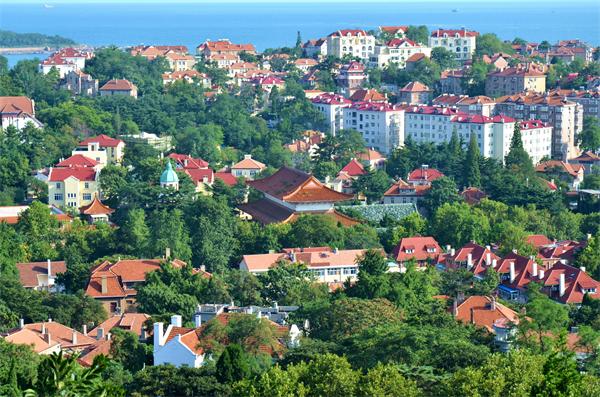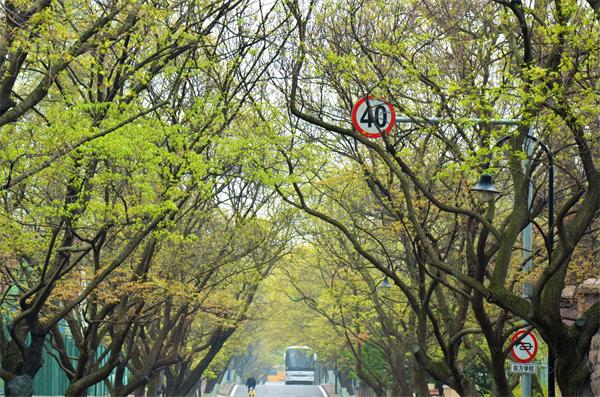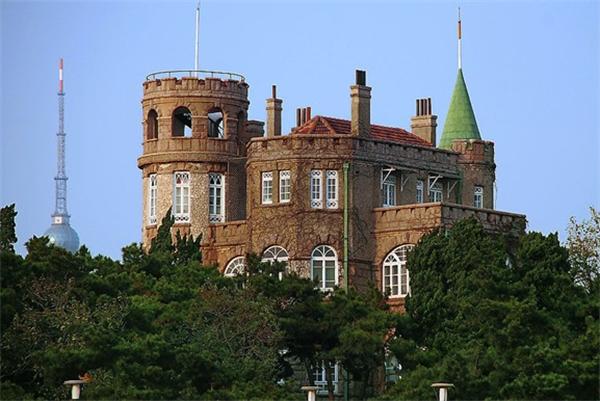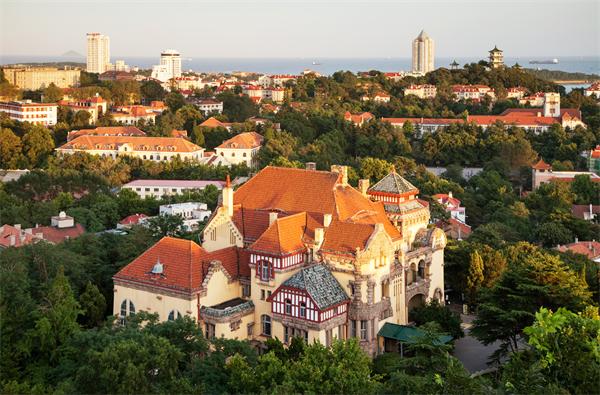 |
|
The scenery at the Badaguan area. [Wang Bo] |
Many Chinese cities have colonial architecture, but few are as appealing as Qingdao’s Badaguan area, included by Chinese National Geographic in the ‘World’s Architecture Museum'.
Spread across 67 acres, the area is home to more than 200 European-style villas built in the early part of the last century. Houses were constructed in a variety of architectural styles, including Greek, Gothic, Byzantium, Rococo, Eclecticism, and Pastoral.
In addition, each street is graced with distinct species of trees and flowers.
From April, pink flowering peaches, and yellow weeping forsythia, kick off a pageant to flower power with cherry and crape myrtle blossom displaying their delights from late April thorough summer. Red maples and myrtles provide striking color in autumn while pines add their green vitality for the winter.
 |
|
The scenery at the Jiayuguan Road. [Wang Bo] |
When the government took over Qingdao after World War I, the city planners decided to build Badaguan as an upscale villa area for investors, expats and missionaries. Designated as a “special stipulated area”, villas begin to mushroom.
Dignitaries, celebrities, and writers who lived there have added to its allure and legend.
One of the most riveting stories is about 16 Juyongguan Road. Painted deep green, it is a four-story villa straight out of Hans Christian Andersen’s Fairytales.
In 1930, Crown Prince Frederik and his cousin Prince Axel from Denmark visited several Chinese cities on board the M/S Fionia, including Hong Kong, Shanghai, Nanjing and Qingdao. Impressed by the beauty of Badaguan, Prince Alex acquired a piece of land where he appointed Hans Valdemar Johansen, Danish consul in Qingdao, to build a summer house for his wife Princess Margaretha.
 |
|
A western-style building. [Shi Zaohua] |
The locals never tire of referring to the building as a witness to the love between a prince and princess, despite the fact that they never came back.
Wladimir Yourieff, a renowned architect in the 1930s and 1940s in Qingdao, designed this and more than 400 buildings in the city.
Another gem, Huashilou, (flower stone house), is a castle-like building with a blend of the neo-classical and Gothic. The granite architecture, once the symbol of authority, was completed in 1906 for the German governor. Built on a peninsula, the five-story villa faces the sea from three sides.
Many Chinese political and military leaders also stayed in this building, to seek asylum or convalesce, including President Chiang Kai-shek and General Chen Yi.
 |
|
A western-style building. [Shi Zaohua] |
Interestingly, all the rooms on the same floor are connected, a safety feature during turbulent times.
The building is now a museum and a favored location for filming.
Walking down the passageway from Huashitou is the No. 2 bathing beach, where chairman Mao Zedong used to swim.
With flowers, a whitewashed beach, and hundreds of historic villas, the area not only attracts sightseers but is also a favored backdrop for wedding photographs where each day dozens of couples pose before embarking on their lives together amid the splendor of a bygone era.